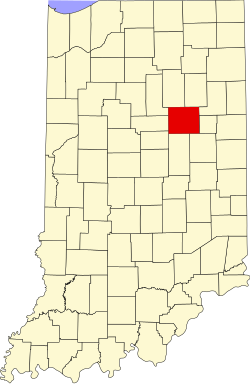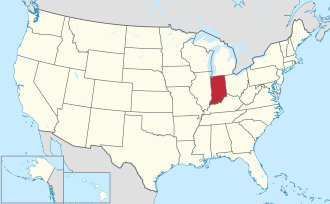Grant County | |
|---|---|
 Grant County Courthouse in Marion | |
 Location within the U.S. state of Indiana | |
 Indiana's location within the U.S. | |
| Coordinates: 40°31′N85°39′W / 40.52°N 85.65°W | |
| Country | |
| State | |
| Founded | 1831 |
| Named after | Samuel and Moses Grant |
| Seat | Marion |
| Largest city | Marion |
| Area | |
• Total | 414.90 sq mi (1,074.6 km2) |
| • Land | 414.07 sq mi (1,072.4 km2) |
| • Water | 0.82 sq mi (2.1 km2) 0.20% |
| Population (2020) | |
• Total | 66,674 |
• Estimate (2025) | 66,615 [1] |
| • Density | 161.02/sq mi (62.171/km2) |
| Time zone | UTC−5 (Eastern) |
| • Summer (DST) | UTC−4 (EDT) |
| Congressional district | 5th |
| Website | www |
| Indiana county number 27 | |
Grant County is a county in central Indiana in the United States Midwest. At the time of the 2020 census, the population was 66,674. [2] The county seat is Marion. [3] Important paleontological discoveries, dating from the Pliocene epoch, have been made at the Pipe Creek Sinkhole in Grant County.[ citation needed ]



